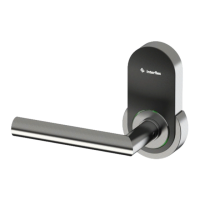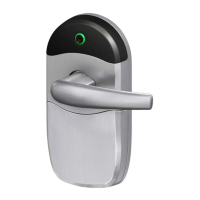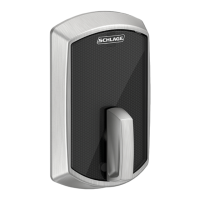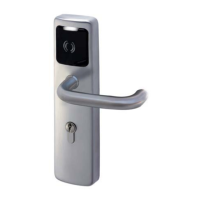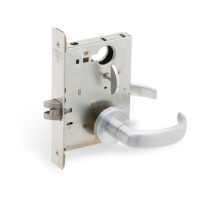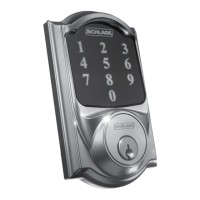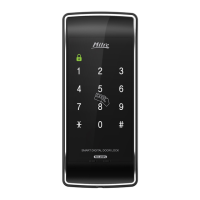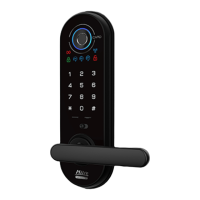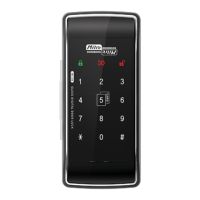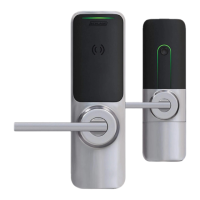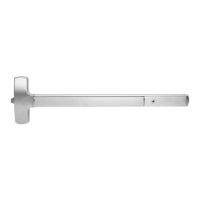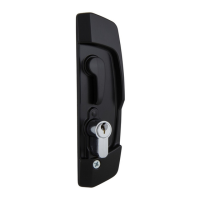Do you have a question about the Allegion Interflex IF-171 and is the answer not in the manual?
Instructions for proper disposal of the product according to country regulations.
Defines devices referred to as offline components in the manual.
Explains hazard levels identified by signal words like WARNING, CAUTION, ATTENTION.
Addresses safety considerations for fire doors and escape routes.
Warning against using products to lock essential emergency equipment.
Overview of the IF-171 door handle's features and capabilities.
Specifies the correct applications and compatibility of the IF-171 door handle.
Lists scenarios and door types where the IF-171 should not be used.
Explains the three-level signaling for battery charge status.
Details the capacity and function of the door handle's event log.
Illustrates the design for doors with electronic authorization on one side.
Illustrates the design for doors with electronic authorization on both sides.
Describes different available shapes and versions of the door handles.
Lists all components included in the product package.
Step-by-step guide for assembling the IF-171 door handle.
Instructions on using the provided template for drilling holes.
Details on correctly installing the square pin component.
Guides the installation process for one-sided authorization.
Specifies hole diameter and warnings for drilling during installation.
Instructions for attaching and securing the mechanical door handle.
Steps for inserting the battery and verifying the handle's operation.
Guides the installation process for two-sided authorization.
Specifies the required square pin protrusion for proper function.
Steps for attaching and securing the key rosette.
Specifies hole diameter and warnings for key rosette installation.
Steps for the first-time setup and integration of the device.
Importance and process of synchronizing device time for access authorizations.
Step-by-step guide to opening doors using a credential.
How to enable or disable the mode for continuous door access.
Instructions and safety precautions for battery replacement.
Explains the three-level signaling for battery charge status.
Procedure for replacing the sealing ring with safety notes.
Guidance on correct battery insertion, including polarity.
Guidelines for cleaning the stainless steel surfaces without damage.
Steps for taking apart the IF-171 door handle.
Steps for disassembling the square pin from the handle.
Proper methods for disposing of the device as electronic waste.
Addresses common issue of the handle not returning to its default position.
Specifies operating and storage environmental parameters for the device.
Lists the standards and regulations the IF-171 door handle complies with.
Provides detailed graphical representations of the door handle's dimensions.
Explains the concept and benefits of the NetworkOnCard system.
Describes how NetworkOnCard readers integrate with the IF-60x0 system.
Details on using the PegaSys Mobile software for data transfer.
Visual representation of data flow between system and readers.
Using special cards for parameterizing NetworkOnCard readers.
Information on system cards for configuration and data upload.
Options for managing NetworkOnCard components within access control systems.
Information on different credential types and their booking functions.
Explains the process of authenticating a person using their credential.
Instructions for using a read/write unit to manage credentials.
Procedure for blacklisting lost or compromised credentials.
Step-by-step guide to opening doors using a credential.
How to enable or disable the mode for continuous door access.
Using time models to automate door status changes.
Restricting access using time models and access points.
Lists supported reading technologies for credentials (MIFARE, LEGIC).
Details data formats and memory requirements for door groups.
Explains the meaning of visual and acoustic feedback signals for credentials.
Explains signals related to system cards like initialization and data transfer.
Details specific signals for system cards like read/write confirmation or errors.
Covers special signals and the process of data transmission.
| Product Type | Mortise Lock |
|---|---|
| Strike Plate | Included |
| ANSI Grade | Grade 1 |
| Backset | 2-3/4 inches |
| Door Thickness | 1-3/4 inches |
| Handing | Reversible |
| Deadbolt Throw | 1 inch |
